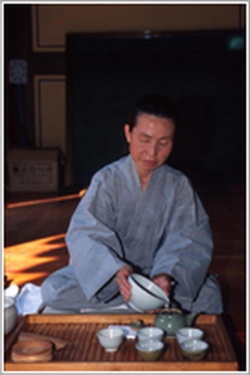Rupajhana
In Buddhism, rūpajhānas (Sanskrit: rūpadhyāna "meditations of form", literally "form meditations") are successive levels of meditation in which the mind is focused on a material or mental object: it is a word frequently used in Pāli scriptures and to a lesser extent in the Mahayana scriptures. Each higher level is harder to reach than the previous one as it relinquishes an attachment to one of the positive experiences of the previous state. The meditations of form are distinguished from arūpajhāna (Skt: arūpadhyāna "formless meditations") which are meditations focused without material or mental objects (i.e., meditations on infinite space, on infinite consciousness, on nothingness, and beyond perception and non-perception).
Characteristics of the Meditations of Form
There are eight jhānas in total, out of which the first four are rūpajhānas, meditations of form. All four rūpajhānas are characterized by ekaggatā (Skt: ekāgratā) which means one-pointedness, i.e. the mind focuses singularly on the material or mental object during meditation.
The four rūpajhānas are:
paṭhama-jhāna (Skt: prathamadhyāna, literally "first jhana")
dutiya-jhāna (Skt: dvitīyadhyāna, literally "second jhana")),
tatiya-jhāna (Skt: tṛtīyadhyāna,literally "third jhana"))
catuttha-jhāna (Skt: caturthadhyāna, literally "fourth jhana"))
See also; right concentration.
These first four jhānas can be characterized by certain factors called jhānaṅga (Skt: dhyānāṅga) whose presence or absence in each rūpajhāna is summarized in the following table:
The jhānaṅga have the following meanings: vitakka means the noticing of the object of meditation, vicāra means the experiencing of the object, pīti means rapture, sukha means joy, ekaggatā means one-pointedness of concentration, upekkhā means equanimity.
The Stages of the Four Meditations of Form
To reach each successive stage of meditation, a factor of attachment in the previous stage is renounced. The first meditation of form includes the three primary factors of the one-pointed noticing and experiencing of the object, rapture in the experience, and joy in the rapture. In the second meditation of form, the meditator lets go of the noticing and experiencing of the object and perceives the rapture and joy of the one pointedness. In the third meditation of form the person detaches from the sense of rapture and perceives the one-pointed joy. In the fourth meditation of form the meditator relinquishes joy and perceives only one-pointed equanimity not disturbed even by joy.
The three realms (Skt. triloka or tridhātu) of desire, form, and formlessness and the meditations of form within the realm of form are related to the Buddhist view of the three poisons of the mind, i.e., greed (lust, desire, etc.), aversion (hatred, anger, etc.) and ignorance (delusion, illusion, etc.). In the six worlds of desire, the three poisons are present and equally strong. When the meditator renounces the poison of greed they are able to enter the realm of form. When the meditator renounces the poison of aversion they enter the formless realm. And when the meditator renounces the last poison of ignorance they leave the three realms altogether and enter the Buddha realms.
After renouncing the poison of greed and entering the realm of form, in order to renounce the poison of aversion, the meditator engages in the four meditations of form. By renouncing one's attachments to objects, the rapture in objects, and joy in the rapture, one is renouncing one's aversion to the absence of objects, absence of rapture, and absence of joy. When one is able to renounce even the equanimity achieved in the fourth meditation of form, one renounces the last attachment to the realm of form and is able to enter the formless realm without being overcome by either desire or aversion, and one becomes able to engage in the four formless meditations.

